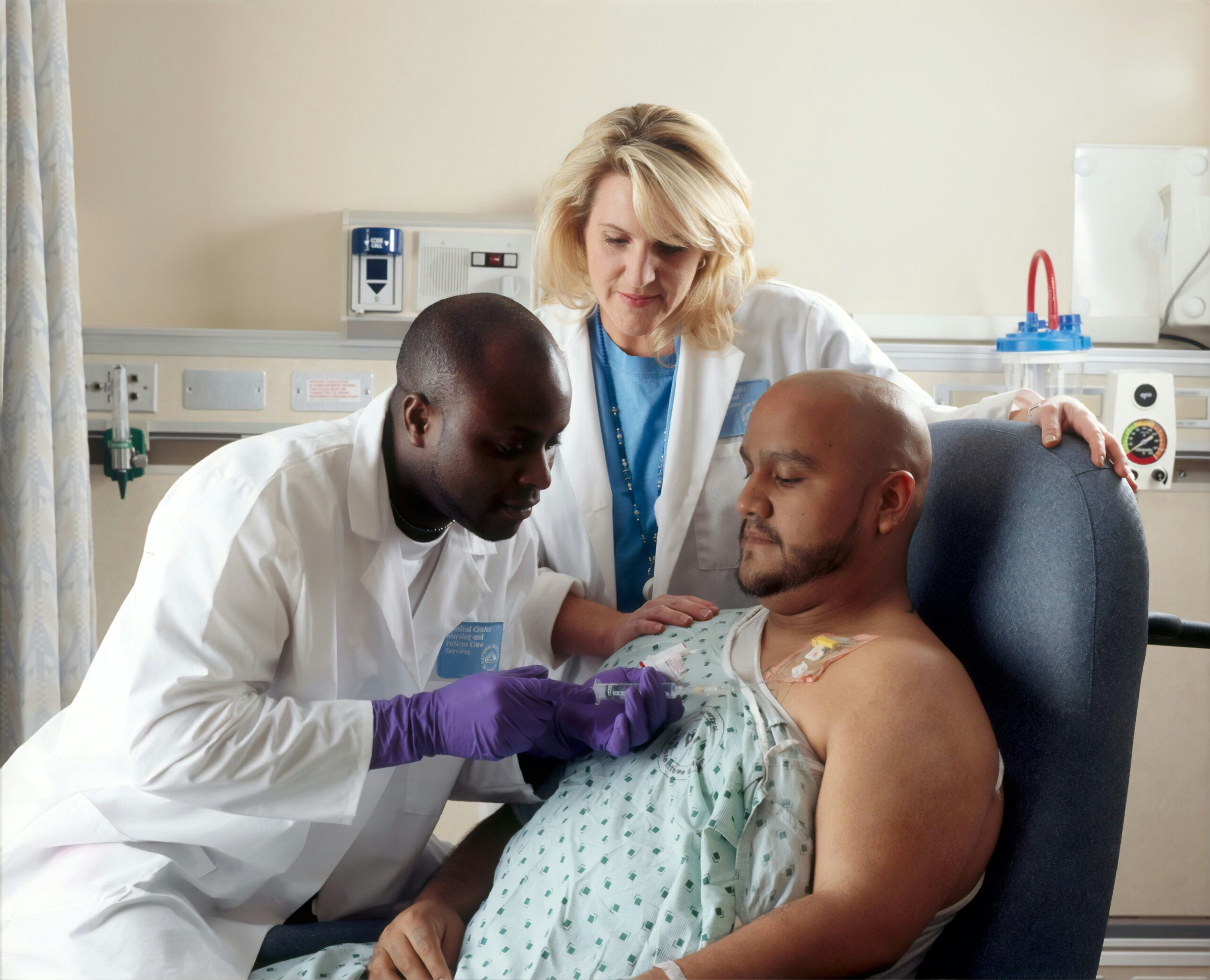Have you ever wondered how doctors examine the prostate gland during a physical exam? It's a common question for many men, who may feel anxious or unsure about the process. This article aims to shed light on this topic, providing a clear and friendly explanation of how the prostate gland is examined during a physical exam. By understanding the procedure, you can feel more informed and at ease during your next check-up.

Understanding the Prostate Gland
The prostate gland is a small, walnut-shaped gland located beneath the bladder and in front of the rectum in men. Its primary function is to produce and secrete seminal fluid, which is a vital component of semen. The prostate gland plays a crucial role in the male reproductive system, as it helps nourish and protect sperm.
Common Problems Associated with the Prostate Gland
Several health issues can arise with the prostate gland, including benign prostatic hyperplasia (BPH), prostatitis, and prostate cancer. BPH refers to the enlargement of the prostate, often causing urinary symptoms like frequent urination or weak urine flow. Prostatitis, on the other hand, is an inflammation of the prostate, typically due to an infection. Lastly, prostate cancer is the most serious and potentially life-threatening condition that can affect the prostate gland.
Importance of Prostate Examination
Regular prostate examinations are crucial for detecting potential problems with the prostate gland early on. These examinations help in identifying issues such as BPH, prostatitis, and even prostate cancer in their initial stages. Early detection can significantly improve treatment outcomes and increase the chances of a full recovery.
The Role of Regular Prostate Examinations in Detecting Prostate Issues
Prostate examinations, including both digital rectal exams (DRE) and prostate-specific antigen (PSA) blood tests, play a vital role in detecting prostate issues. By regularly monitoring the size, shape, and texture of the prostate gland, a doctor can identify any abnormalities that may indicate a problem. Additionally, PSA blood tests measure the levels of a specific protein produced by the prostate gland. Elevated levels of PSA can sometimes indicate the presence of prostate cancer.
The Recommended Age for Men to Start Receiving Prostate Exams
It is generally recommended that men discuss prostate exams with their healthcare provider starting at the age of 50. However, men with a family history of prostate cancer or other risk factors may be advised to undergo regular examinations earlier, typically around the age of 40 or 45. It is important to consult with a healthcare professional to determine the appropriate age to start receiving prostate exams based on individual risk factors.
Types of Prostate Examinations
There are two main types of prostate examinations: the Digital Rectal Exam (DRE) and the Prostate-Specific Antigen (PSA) blood test. Both of these examinations serve as valuable tools in evaluating the health of the prostate gland.
Description of the Digital Rectal Exam (DRE)
During the DRE, a medical professional inserts a gloved, lubricated finger into the rectum to feel the prostate gland. This physical examination allows the doctor to assess the size, shape, and texture of the prostate gland. While it may sound uncomfortable, the DRE is usually quick and relatively painless, causing minimal discomfort.
Description of the Prostate-Specific Antigen (PSA) Blood Test
The PSA blood test measures the levels of prostate-specific antigen, a protein produced by the prostate gland, in the blood. A small blood sample is drawn from the arm and sent to the laboratory for analysis. Elevated PSA levels may indicate the presence of prostate cancer or other prostate conditions, but further tests are necessary to make an accurate diagnosis.
Other Methodologies Used for Prostate Examinations
In addition to the DRE and PSA blood test, there are other methodologies used for evaluating the prostate gland. These include imaging tests like transrectal ultrasound (TRUS) and magnetic resonance imaging (MRI). These imaging techniques can provide more detailed information about the structure and potential abnormalities within the prostate gland.
Preparing For a Prostate Exam
Before a prostate exam, there are a few steps that patients can take to prepare themselves physically and mentally.
Steps That Patients Should Take Before a Prostate Exam
To ensure a successful and comfortable prostate exam, it is advisable to empty the bladder before the appointment. This can prevent discomfort during the exam and improve accuracy. Additionally, some doctors may recommend avoiding caffeine or alcohol prior to the exam, as these substances can irritate the prostate and affect the test results.
Points to Discuss with the Doctor Prior to the Exam
It is crucial to have an open and honest discussion with the doctor before undergoing a prostate exam. This is an opportunity to address any concerns, ask questions about the procedure, and discuss any symptoms or changes in urinary habits that may indicate a problem. It is important to disclose any relevant medical history, medications, or allergies to ensure the safest and most effective examination.

The Digital Rectal Exam (DRE) Procedure
The DRE procedure is relatively simple and straightforward, despite some initial hesitation or concern one might experience.
Explanation of the DRE Procedure
During a DRE, the doctor will ask you to lie on your side with your knees bent towards your chest. They will then insert a gloved and lubricated finger into the rectum. Using gentle pressure, the doctor will palpate the prostate gland, noting its size, shape, and texture. The entire procedure usually lasts only a few seconds.
What Sensations the Patient May Experience During a DRE
While the idea of a DRE may seem uncomfortable or embarrassing, it is generally a painless procedure. Some patients may experience a slight pressure or fullness sensation during the examination, but it should not be overly painful. It is important to communicate any discomfort with the doctor so that adjustments can be made for your comfort.
Interpreting Results from a DRE
After the DRE, the doctor will discuss their findings with you. If the prostate gland feels normal in size, shape, and texture, it indicates a healthy prostate. However, if any abnormalities are detected, further examinations or tests may be recommended to investigate any potential issues more thoroughly.
The PSA Blood Test Procedure
The PSA blood test is a simple and relatively quick procedure that requires a blood sample.
Explanation of the PSA Blood Test Procedure
For a PSA blood test, a healthcare professional will draw a small blood sample from your arm using a needle. The blood sample is then sent to a laboratory for analysis. The results will indicate the level of PSA in the bloodstream, with higher levels potentially indicating the presence of prostate issues.
What the PSA Blood Test Measures
The PSA blood test measures the levels of prostate-specific antigen, a protein produced by the prostate gland. While elevated PSA levels can indicate the possibility of prostate cancer, it is important to note that other factors, such as benign prostatic hyperplasia or prostatitis, can also contribute to increased levels. Further testing is necessary to determine the exact cause of elevated PSA levels.
Understanding PSA Blood Test Results
PSA blood test results are typically reported as nanograms of PSA per milliliter of blood (ng/mL). It is important to remember that the interpretation of results may vary depending on factors such as age, race, and previous prostate conditions. Generally, a PSA level below 4 ng/mL is considered normal, but further investigation may be required for higher levels.

Potential Complications or Risks in Prostate Exams
While prostate exams are generally safe, there can be some potential complications or risks associated with both the DRE and PSA blood test.
Common Side Effects of DRE
Common side effects of the DRE are usually minor and temporary. These may include temporary discomfort or a small amount of rectal bleeding. However, these side effects typically resolve quickly and do not require any specific treatment.
Risks Associated with a PSA Blood Test
The PSA blood test itself does not pose any direct risks or side effects. However, false-positive results can lead to unnecessary worry and additional testing, which may carry some risks. It is important to have a discussion with the doctor about the potential benefits and limitations of the PSA blood test before undergoing the examination.
Mitigating These Complications or Risks
To mitigate potential complications or risks, it is important to choose a qualified healthcare professional to perform the prostate exam. Openly communicating any concerns or medical history can also help ensure a safe and appropriate examination. Additionally, discussing the potential risks and benefits with the doctor can help individuals make informed decisions about the need for further tests or procedures.
After the Prostate Exam
After a prostate exam, there are certain circumstances, follow-up procedures, and next steps to consider.
Post-Exam Circumstances: Normal Findings and Possible Concerns
If the results of the prostate exam indicate that the prostate gland is normal in size, shape, and texture, it suggests a healthy prostate. It is important to remember that normal findings during an exam do not guarantee the absence of prostate problems entirely. Some prostate conditions may not be detectable through a physical examination alone, highlighting the importance of regular check-ups.
If any abnormalities or concerns are identified during the exam, further tests or procedures may be recommended. Additional diagnostic tests, such as a biopsy or imaging studies, may be necessary to provide a more accurate diagnosis.
Follow-Up and Monitoring After a Prostate Exam
Following a prostate exam, the doctor may recommend regular monitoring to ensure ongoing prostate health. This usually involves regular check-ups and possibly repeating the prostate exam or PSA blood test at specified intervals. These follow-up visits help track any changes or developments in the prostate gland and allow for early intervention if needed.
Next Steps if Abnormal Results are Detected
If the results of a prostate exam indicate potential issues or abnormalities, the doctor will discuss appropriate next steps. Depending on the findings, additional evaluations, such as further imaging tests or a biopsy, may be necessary to confirm a diagnosis. Treatment options will then be discussed, ranging from medication to surgery, depending on the specific condition detected.
The Role of Lifestyle in Prostate Health
Maintaining a healthy lifestyle can significantly contribute to prostate health and overall well-being.
Diet Implications on Prostate Health
A balanced and nutritious diet is crucial for maintaining a healthy prostate. Include foods rich in antioxidants, vitamins, and minerals, such as fruits, vegetables, whole grains, and lean proteins. Additionally, incorporating foods like tomatoes, green tea, and fatty fish, which contain prostate-friendly nutrients, can be beneficial. Limiting the consumption of red meat, high-fat foods, and excessive dairy products may also help promote prostate health.
Exercise and Prostate Health
Regular physical exercise has various health benefits, including optimal prostate health. Engaging in activities such as brisk walking, jogging, cycling, or swimming can improve blood flow, promote overall fitness, and reduce the risk of prostate problems. It is recommended to engage in at least 150 minutes of moderate-intensity exercise or 75 minutes of vigorous exercise per week.
Other Lifestyle Factors That Affect the Prostate
Apart from diet and exercise, there are other factors that can impact prostate health. Avoiding excessive alcohol consumption and quitting smoking can significantly reduce the risk of developing prostate problems. Managing stress levels and getting enough quality sleep also play a part in maintaining overall health, including prostate health.
Misconceptions About Prostate Exams
There are several common misconceptions surrounding prostate exams that can prevent individuals from receiving the necessary screenings.
Common Myths About Prostate Exams
One common myth is that prostate exams are painful or embarrassing. However, both the DRE and PSA blood test are generally quick, painless, and performed in a professional and respectful manner. Another misconception is that only older men need to undergo prostate exams. In reality, the risk of prostate issues exists across various age groups, and early detection is crucial for effective treatment.
Importance of Addressing These Misconceptions
Addressing these misconceptions is vital to encourage individuals to prioritize their prostate health. By debunking myths and providing accurate information, men can make informed decisions about receiving regular prostate exams. Open and honest communication with healthcare providers is essential for addressing any concerns or fears associated with prostate examinations.
Relevance of Patient Education to Ensure Regular Checks
Patient education plays a crucial role in increasing awareness and understanding of the importance of prostate exams. By providing clear and accurate information about the purpose, procedures, and potential benefits of these examinations, individuals are more likely to seek regular screenings. Encouraging open dialogue and answering questions can help alleviate any fears or anxieties, ultimately promoting proactive and preventative measures for prostate health.
In conclusion, understanding the prostate gland and the importance of regular prostate examinations is crucial for maintaining optimal prostate health. By familiarizing yourself with the different methods of prostate examination, preparing for the exams, and addressing any potential risks or concerns, you can take an active role in monitoring your prostate health. By adopting a healthy lifestyle and debunking misconceptions surrounding prostate exams, you can ensure regular screenings and prioritize your overall well-being. Remember, early detection is key in detecting and effectively managing any potential prostate issues.

